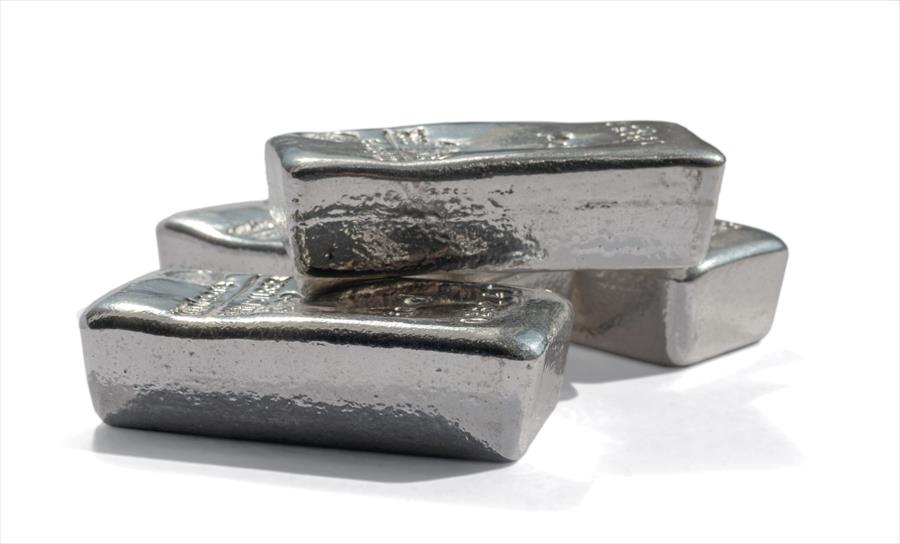The Main Sources of Palladium Imports for the U.S.
When you think of precious metals, gold and silver likely come to mind first. However, there’s another intriguing and increasingly vital element in the mix—palladium. With its diverse applications, from catalytic converters in automobiles to jewelry, understanding where the U.S. sources palladium is a captivating journey into the world of metals and mining. Read on as the experts from First National Bullion, San Diego collectors’ go-to source for information about the world of precious metals, delve into the sources of palladium in the United States and explore its significance.
The Palladium Rush
Palladium, a silvery-white metal, is one of the six platinum group elements, alongside platinum, rhodium, ruthenium, iridium, and osmium. These metals share several properties, making them invaluable for various industrial and commercial purposes. Of these, palladium has seen a surge in demand in recent years, largely driven by its role in reducing harmful emissions from vehicles. Palladium has unique properties that make it suitable for catalytic converters, fuel cells, hydrogen storage, and other applications that require high temperature and corrosion resistance.
Russia’s Palladium Dominance
The primary source of palladium in the world is Russia. This vast nation accounts for a substantial portion of global palladium production, with most of its supply extracted from mines in the Norilsk region, located within the Siberian Arctic. The Russian government, through state-owned enterprises like Norilsk Nickel, maintains a significant influence on the global palladium market.
South Africa’s Palladium Reserves
Following Russia, South Africa stands as the second-largest producer of palladium worldwide. Mines in South Africa’s Bushveld Complex hold rich deposits of palladium along with other platinum group metals. Despite ongoing challenges, such as labor disputes and environmental concerns, South Africa remains a key contributor to the global palladium supply chain.
North American Palladium Production
The United States plays a crucial role in the palladium market, although its production isn’t as dominant as Russia or South Africa. The primary sources of palladium in North America are located in Canada and the U.S. These reserves have attracted considerable attention, given the growing importance of palladium in the automotive industry.
Canadian Palladium Mines
Canada, particularly the province of Ontario, hosts substantial palladium deposits. Mines like the Lac des Iles Mine and Thunder Bay North Project have been integral to the North American palladium supply. The proximity to the U.S. market and the stable political climate in Canada make it a reliable source of palladium for American industries.
American Palladium Resources
In the United States, palladium isn’t as abundant as in Canada, but it still plays a significant role in the nation’s economy. The Stillwater Complex in Montana is a well-known source of palladium and platinum group metals. Additionally, recycling and secondary sources contribute to the availability of palladium within the country.
The Role of Recycling
Recycling plays a substantial role in the availability of palladium in the United States. Given the high demand for palladium, recycling used catalytic converters and electronic components is economically and environmentally advantageous. Recycling facilities across the nation recover palladium from end-of-life products, contributing to the domestic supply.
Implications for the Automotive Industry
The surge in palladium demand is intricately linked to the automotive industry’s emissions regulations. Catalytic converters, which use palladium to convert harmful gasses into less harmful emissions, are a fundamental component of these regulations. The U.S. automotive industry relies heavily on palladium imports to meet these standards.
Geopolitical Considerations
The United States’ dependence on foreign sources for palladium has geopolitical implications. It highlights the importance of diversifying sources to reduce vulnerability to supply disruptions. As palladium becomes increasingly vital in emissions control and technology, securing domestic reserves becomes a matter of national interest.
The Future of Palladium Sourcing
Palladium sourcing in the United States is a dynamic and evolving landscape. While Russia and South Africa are the primary global producers, North America, particularly Canada and the U.S., holds significant reserves. Recycling efforts further contribute to palladium availability. As technology and environmental regulations continue to shape the demand for palladium, the United States must consider strategies to ensure a stable and diversified supply chain.
The Market Outlook
The outlook for the palladium market remains bullish, as the demand is expected to grow faster than the supply in the coming years. The main factors that will support the demand are:
- The tightening emission standards for gasoline vehicles in major markets such as China, Europe, and India, which will increase the use of palladium in catalytic converters
- The growing adoption of hybrid electric vehicles (HEVs), which also use palladium in their catalytic converters and batteries
- The emerging applications of palladium in hydrogen-related technologies, such as fuel cells and electrolyzers
On the supply side, the main challenges are:
- The geopolitical risks and labor issues in the major producing countries, such as Russia and South Africa, which could disrupt the production and exports of palladium
- The environmental and social impacts of mining activities, such as water pollution, land degradation, greenhouse gas emissions, human rights violations, and community conflicts
- The technical difficulties and high costs of developing new palladium projects or expanding existing ones
Given these factors, the U.S. faces a strategic challenge to secure its palladium supply for its domestic needs and reduce its dependence on foreign sources. Some possible solutions are:
- Increasing the domestic production of palladium from primary or secondary sources
- Diversifying the import sources of palladium and establishing long-term contracts with reliable suppliers
- Promoting the recycling and recovery of palladium from end-of-life products or scrap materials
- Supporting the research and development of alternative materials or technologies that can replace or reduce the use of palladium in various applications
Palladium, once an obscure metal, has taken center stage in the quest for cleaner, greener technologies. Understanding where the U.S. gets its palladium isn’t just a matter of economic importance but also a national security concern. As the world moves toward a sustainable future, the source of palladium and its availability in the United States will continue to be a critical aspect of our industrial and environmental aspirations.
Whether they’re veteran palladium collectors or new investors looking to buy gold bars, San Diego residents should reach out to the experts at First National Bullion. We offer a huge selection of palladium, gold, platinum, and silver items. San Diego collectors who are looking for the finest-quality coins, bars, and bullion should give us a call at (855) 919-2536 to speak with one of our precious metals experts.
The statements made in this blog are opinions, and past performance is not indicative of future returns. Precious metals, like all investments, carry risk. Precious metals and coins may appreciate, depreciate, or stay the same in cash value depending on a variety of factors. First National Bullion does not guarantee, and its website and employees make no representation, that any metals for sale will appreciate sufficiently to earn the customers a profit. The decision to buy, sell, or borrow precious metals and which precious metals to purchase, borrow, or sell are made at the customer’s sole discretion.


